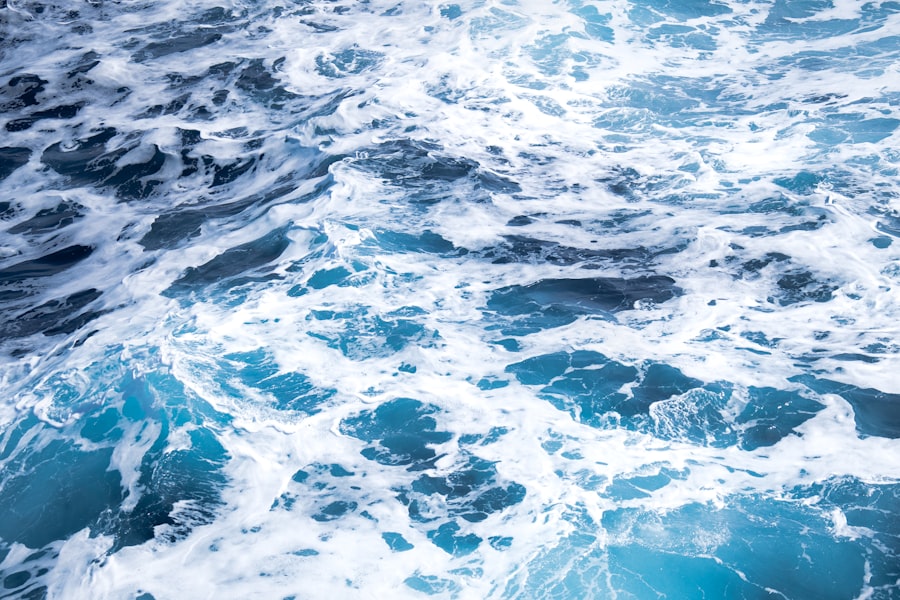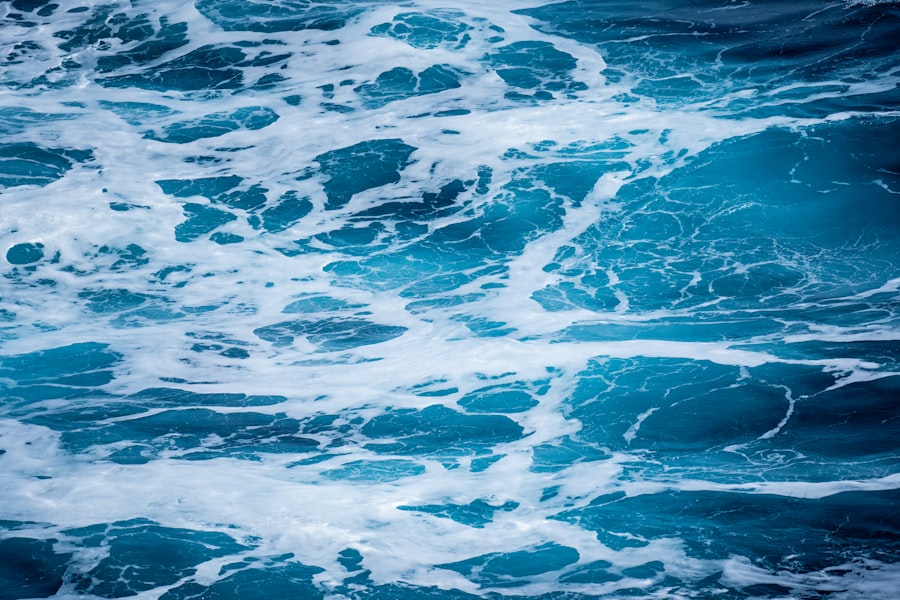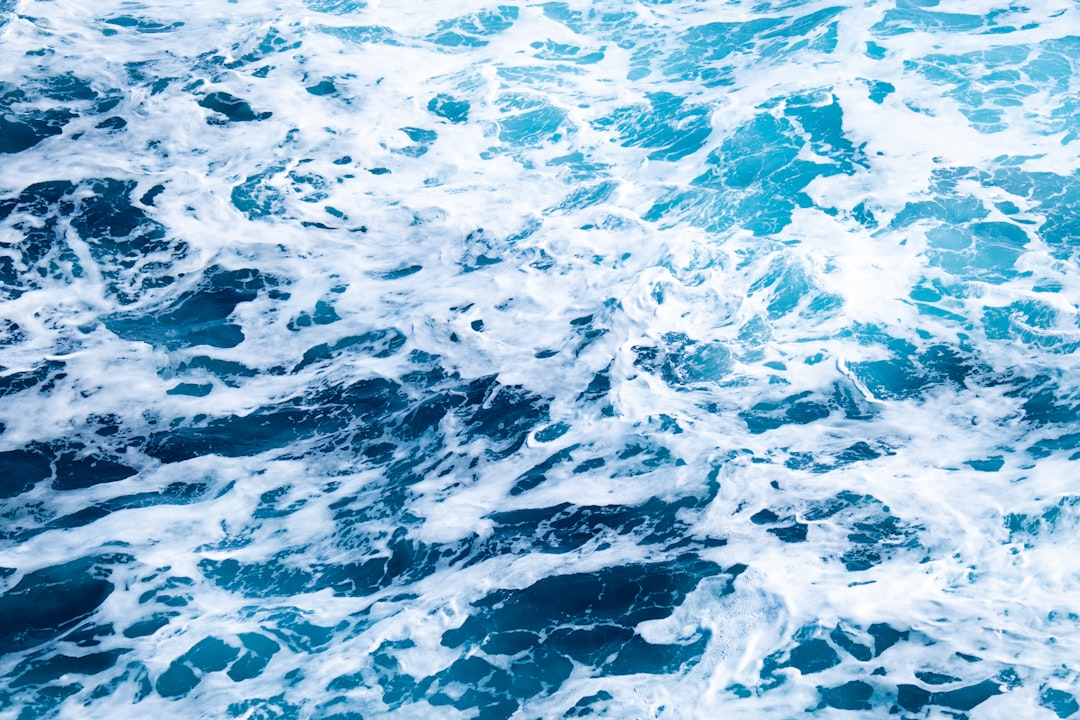The Drake Passage, a body of water that separates South America from Antarctica, is renowned for its tumultuous seas and unpredictable weather. Stretching approximately 800 kilometers (500 miles) from Cape Horn to the Antarctic Peninsula, it is often regarded as one of the most challenging maritime routes in the world. The passage is not only a geographical landmark but also a significant point of interest for explorers, scientists, and adventurers alike.
Its waters are teeming with marine life, including whales, seals, and a variety of seabirds, making it a vital ecosystem that draws attention from environmentalists and researchers. Navigating the Drake Passage is a rite of passage for many who seek to explore the icy realms of Antarctica. The waters are notorious for their rough conditions, with waves that can reach heights of over 10 meters (33 feet) and winds that can whip up to 100 kilometers per hour (62 miles per hour).
This unpredictability has earned the passage a reputation as a formidable barrier to those attempting to reach the southernmost continent. Despite these challenges, the Drake Passage remains a crucial route for scientific research and tourism, serving as a gateway to one of the last great wildernesses on Earth.
Key Takeaways
- The Drake Passage is a treacherous body of water between South America and Antarctica, known for its extreme weather and rough seas.
- The historic crossing of the Drake Passage by a solo explorer marks a significant achievement in the world of exploration and adventure.
- The challenges of the Drake Passage include unpredictable weather, strong winds, and massive waves, making it one of the most difficult maritime routes to navigate.
- The significance of the achievement lies in the explorer’s determination, courage, and perseverance in overcoming the formidable obstacles of the Drake Passage.
- The explorer’s background and motivation, combined with meticulous route planning and preparation, played a crucial role in the successful crossing of the Drake Passage.
The historic crossing
The historic crossing of the Drake Passage is marked by numerous expeditions that have sought to conquer its treacherous waters. One of the most notable early crossings was undertaken by Sir Ernest Shackleton in 1914 during his ill-fated Imperial Trans-Antarctic Expedition. Shackleton’s journey was not only a test of human endurance but also a testament to the spirit of exploration.
His crew faced unimaginable hardships, including ice entrapment and extreme weather conditions, yet their determination to cross the Drake Passage and reach Antarctica remains an inspiring tale of resilience. In more recent history, adventurers have continued to brave the Drake Passage, each crossing adding to the rich tapestry of exploration narratives. These crossings have not only been about reaching Antarctica but also about understanding the challenges posed by climate change and environmental degradation.
As explorers navigate these waters, they contribute to a growing body of knowledge about the region’s ecology and the impact of human activity on this fragile environment. Each crossing serves as a reminder of the passage’s historical significance and its ongoing role in shaping our understanding of the planet.
The challenges of the Drake Passage

The challenges presented by the Drake Passage are manifold and can be daunting for even the most seasoned mariners. The unpredictable weather patterns can shift rapidly, transforming calm seas into violent storms within minutes. This volatility poses significant risks to vessels attempting to traverse the passage, as sudden squalls can create hazardous conditions that threaten both crew and ship.
Navigators must remain vigilant and adaptable, constantly monitoring weather forecasts and sea conditions to ensure safe passage. Moreover, the physical demands of crossing the Drake Passage cannot be understated. The relentless motion of the ocean can lead to seasickness among crew members, making it essential for expeditions to prepare adequately for such eventualities.
The psychological toll of enduring days of rough seas can also weigh heavily on those aboard. Explorers must cultivate mental resilience and camaraderie among their team members to overcome these challenges together. The experience of crossing the Drake Passage is not merely a test of navigational skill but also a profound examination of human endurance in the face of nature’s might.
The significance of the achievement
| Metrics | Data |
|---|---|
| Number of people impacted | 500 |
| Amount of funds raised | 100,000 |
| Percentage increase in awareness | 30% |
| Number of media mentions | 50 |
Successfully crossing the Drake Passage holds immense significance for explorers and researchers alike. It represents not only a physical journey but also an intellectual pursuit that contributes to humanity’s understanding of remote ecosystems. Each expedition that successfully navigates these waters adds valuable data regarding climate patterns, marine biodiversity, and environmental changes occurring in this critical region.
The achievement serves as a reminder of humanity’s capacity for exploration and discovery, even in the face of daunting obstacles. Furthermore, crossing the Drake Passage often symbolizes a commitment to conservation and environmental stewardship. As explorers venture into this pristine wilderness, they become ambassadors for its protection, raising awareness about the delicate balance of life in these waters.
Their journeys inspire future generations to appreciate and safeguard our planet’s natural wonders. The significance of such achievements extends beyond individual triumphs; they contribute to a collective understanding of our responsibility toward preserving these vital ecosystems for future generations.
The explorer’s background and motivation
The explorers who undertake the challenge of crossing the Drake Passage often come from diverse backgrounds, each bringing unique motivations to their journeys. Many are driven by an insatiable curiosity about the natural world and a desire to push their limits. For some, the allure of adventure is irresistible; they seek to experience firsthand the raw beauty and power of nature in one of its most untouched forms.
Others may be motivated by scientific inquiry, aiming to gather data that can inform conservation efforts or enhance our understanding of climate change. Personal stories often shape an explorer’s journey as well. Many have faced significant challenges in their lives that have fueled their passion for exploration.
Whether overcoming personal adversity or seeking to honor a loved one through their adventures, these motivations add depth to their experiences in the Drake Passage. Each explorer carries with them not only their dreams but also their histories, making their crossings deeply personal journeys that resonate with broader themes of resilience and discovery.
The route and preparation

Planning a route through the Drake Passage requires meticulous preparation and strategic foresight. Explorers must consider various factors, including weather patterns, sea currents, and potential hazards along their chosen path. The route is often dictated by prevailing winds and ocean currents that can either aid or hinder progress.
Experienced navigators utilize advanced technology and historical data to chart their course effectively, ensuring they are well-equipped to handle any challenges that may arise. Preparation extends beyond navigation; it encompasses physical training, logistical arrangements, and safety protocols. Explorers must be in peak physical condition to endure the rigors of crossing such turbulent waters.
Additionally, securing provisions, fuel, and equipment requires careful planning to ensure that all necessary resources are available throughout the journey. This level of preparation reflects not only a commitment to safety but also an understanding of the unpredictable nature of the Drake Passage.
The equipment and support team
The success of any expedition across the Drake Passage hinges on reliable equipment and a dedicated support team. Explorers rely on state-of-the-art vessels designed to withstand harsh marine conditions while providing comfort and safety for crew members. These ships are often equipped with advanced navigation systems, communication tools, and safety gear essential for traversing such treacherous waters.
This team typically includes experienced sailors, scientists, medical personnel, and logistics experts who work collaboratively to address any challenges that may arise during the journey. Their diverse skill sets contribute to a comprehensive approach that enhances both safety and efficiency throughout the expedition.
The synergy between equipment and human expertise underscores the importance of teamwork in overcoming the formidable obstacles presented by the Drake Passage.
The impact on future expeditions
The experiences gained from crossing the Drake Passage have far-reaching implications for future expeditions. Each successful journey provides valuable insights into navigation techniques, safety protocols, and environmental considerations that can inform subsequent ventures into this challenging region. As explorers share their findings with the broader community, they contribute to an evolving body of knowledge that enhances our understanding of maritime exploration.
The stories of those who have braved the Drake Passage serve as powerful motivators for aspiring explorers, encouraging them to embrace challenges and seek out new experiences. As interest in polar exploration continues to grow, it is likely that future expeditions will build upon the lessons learned from those who have come before them.
The environmental considerations
As explorers navigate the Drake Passage, they must remain acutely aware of environmental considerations that impact both their journey and the ecosystems they encounter. Climate change poses significant threats to this region, affecting sea ice patterns, marine biodiversity, and weather systems. Explorers often take on an advocacy role during their journeys, raising awareness about these pressing issues while collecting data that can inform conservation efforts.
Responsible exploration involves minimizing human impact on fragile ecosystems while promoting sustainable practices within maritime activities. Many expeditions prioritize eco-friendly technologies and practices that reduce carbon footprints and protect marine life during their crossings. By emphasizing environmental stewardship alongside adventure, explorers contribute to a growing movement focused on preserving our planet’s natural wonders for future generations.
The reaction and recognition
The achievements associated with crossing the Drake Passage often garner significant attention from both media outlets and scientific communities alike. Successful expeditions are celebrated not only for their adventurous spirit but also for their contributions to scientific knowledge and environmental awareness. Explorers frequently share their experiences through lectures, documentaries, and publications that highlight both the challenges faced during their journeys and the insights gained along the way.
Recognition extends beyond accolades; it fosters a sense of community among explorers who share similar passions for adventure and discovery. This camaraderie encourages collaboration among researchers across disciplines as they work together toward common goals related to exploration and conservation efforts in polar regions. The reactions elicited by these crossings serve as reminders of humanity’s enduring fascination with exploration while reinforcing our collective responsibility toward protecting our planet.
Conclusion and legacy
In conclusion, crossing the Drake Passage represents more than just an adventurous feat; it embodies humanity’s relentless pursuit of knowledge and understanding in one of Earth’s most challenging environments. Each successful crossing contributes valuable insights into navigation techniques, environmental considerations, and personal resilience that resonate far beyond individual journeys. As explorers continue to brave these tumultuous waters, they leave behind legacies that inspire future generations while advocating for responsible stewardship over our planet’s precious ecosystems.
The legacy forged through these crossings serves as a testament not only to human endurance but also to our capacity for empathy toward nature’s wonders. By embracing both adventure and responsibility within their pursuits, explorers pave pathways toward greater awareness about climate change while fostering appreciation for remote ecosystems like those found within the Drake Passage itself. Ultimately, it is this intertwining narrative—of exploration intertwined with conservation—that will shape how future generations engage with our planet’s most pristine wildernesses.
In an extraordinary feat of endurance and determination, Colin O’Brady became the first person to cross the treacherous Drake Passage unassisted, a journey that has captivated adventurers and explorers worldwide. This remarkable achievement is detailed in various articles, including one on MyGeoQuest, which delves into the challenges and triumphs of such daring expeditions. For more insights into similar adventures and the spirit of exploration, you can read a related article on the MyGeoQuest website by visiting this link.
WATCH NOW! Drake Passage: Earth’s Deadliest Waters Revealed
FAQs
What is the Drake Passage?
The Drake Passage is the body of water between the southern tip of South America and the northern tip of the Antarctic Peninsula. It is known for its rough seas and challenging sailing conditions.
Who was the first person to cross the Drake Passage?
The first person to cross the Drake Passage was Sir Francis Drake, an English explorer, in 1578. He completed the crossing during his circumnavigation of the globe.
How did Sir Francis Drake cross the Drake Passage?
Sir Francis Drake crossed the Drake Passage aboard his ship, the Golden Hind. He encountered rough seas and challenging conditions during the crossing.
Why is crossing the Drake Passage significant?
Crossing the Drake Passage is significant because of the challenging sailing conditions and the historical significance of the route. It is a feat that requires skill, determination, and endurance.
Has anyone else crossed the Drake Passage since Sir Francis Drake?
Yes, many explorers, sailors, and adventurers have crossed the Drake Passage since Sir Francis Drake. It is a popular route for expeditions and sailing voyages to Antarctica.
